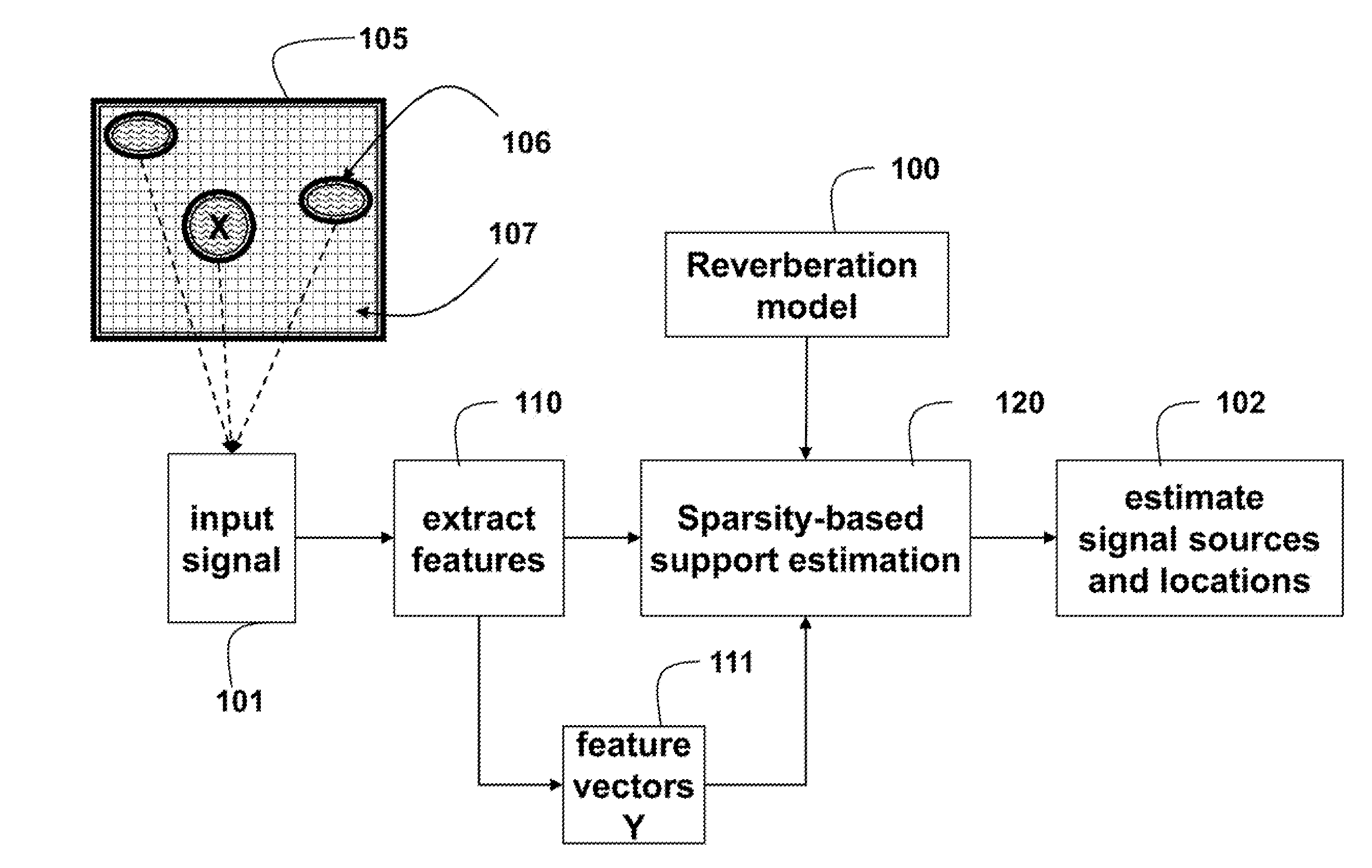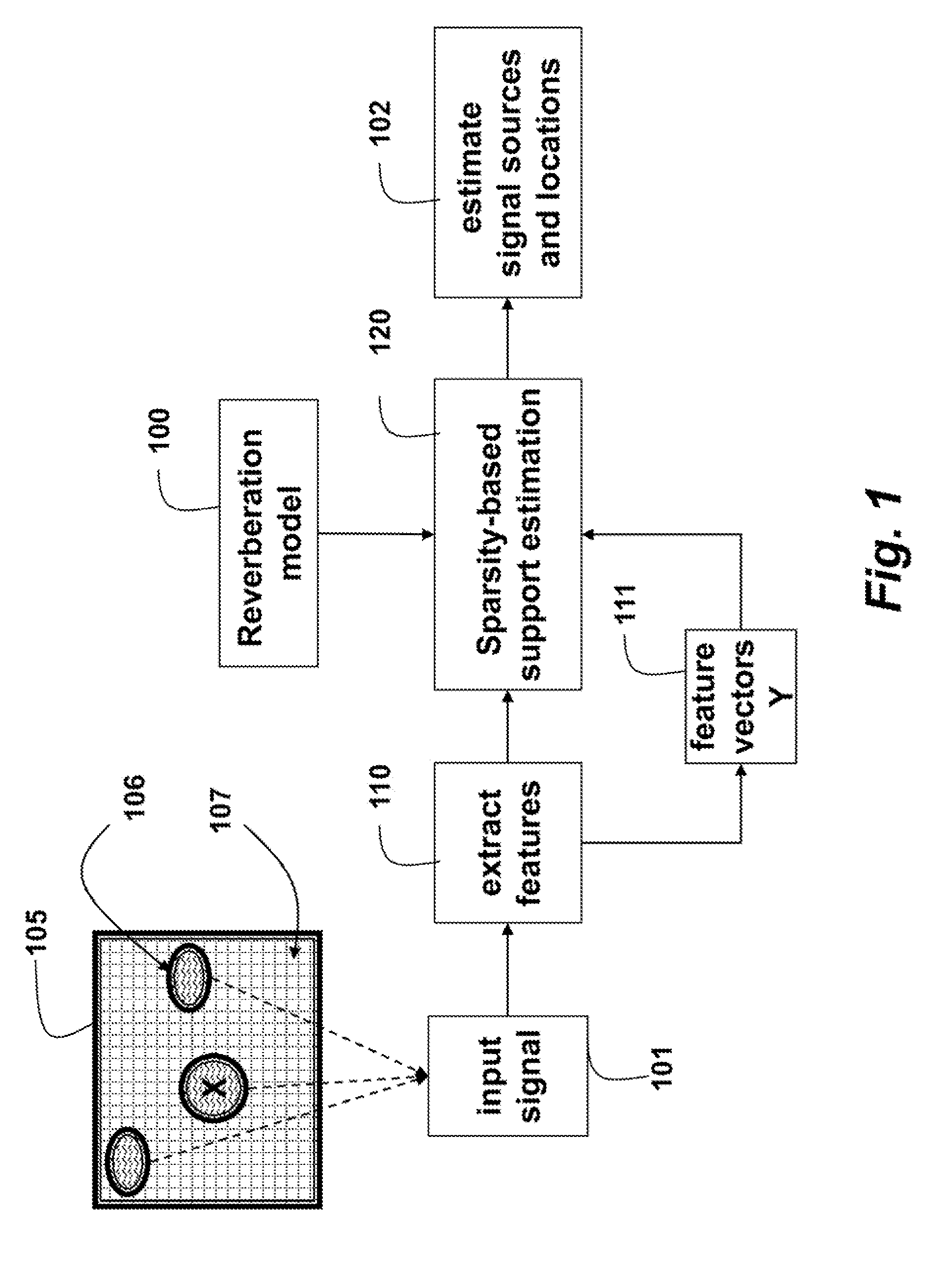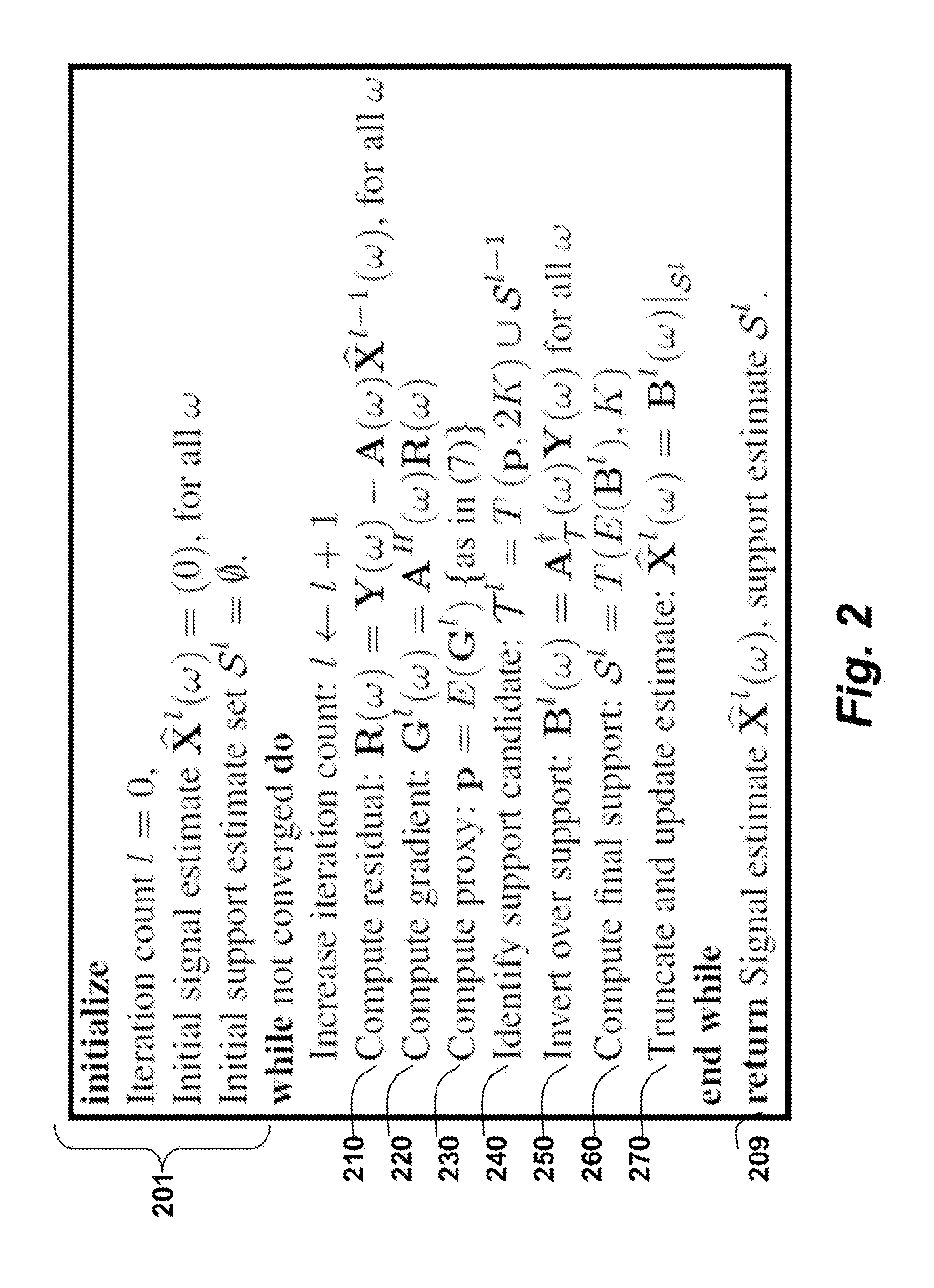Method for Localizing Sources of Signals in Reverberant Environments Using Sparse Optimization
- Summary
- Abstract
- Description
- Claims
- Application Information
AI Technical Summary
Benefits of technology
Problems solved by technology
Method used
Image
Examples
Embodiment Construction
[0013]As shown in FIG. 1, embodiments of our invention provide a method for localizing source signals 106 emitted in a reverberant environment 105 using sparse optimization.
[0014]Input signals 101 are acquired from the sources by a set of sensors. For example, the signals are acoustic signals and the sensors are microphones. The input signal at each frequency is modeled as a linear combination of all the source signals at that particular frequency. Coefficients in the linear combination correspond to a frequency response of the environment from each location at that frequency.
[0015]However, it is understood that other signaling modalities can be used by the embodiments of the invention.
[0016]Features extracted 110 from the input signals produce a feature vector 111. The specific features used depend on the signaling modality. In the following we assume that the input signal is usually in the form of a feature vector, although we do not say so explicitly each time.
[0017]A sparsity-ba...
PUM
 Login to View More
Login to View More Abstract
Description
Claims
Application Information
 Login to View More
Login to View More - R&D
- Intellectual Property
- Life Sciences
- Materials
- Tech Scout
- Unparalleled Data Quality
- Higher Quality Content
- 60% Fewer Hallucinations
Browse by: Latest US Patents, China's latest patents, Technical Efficacy Thesaurus, Application Domain, Technology Topic, Popular Technical Reports.
© 2025 PatSnap. All rights reserved.Legal|Privacy policy|Modern Slavery Act Transparency Statement|Sitemap|About US| Contact US: help@patsnap.com



